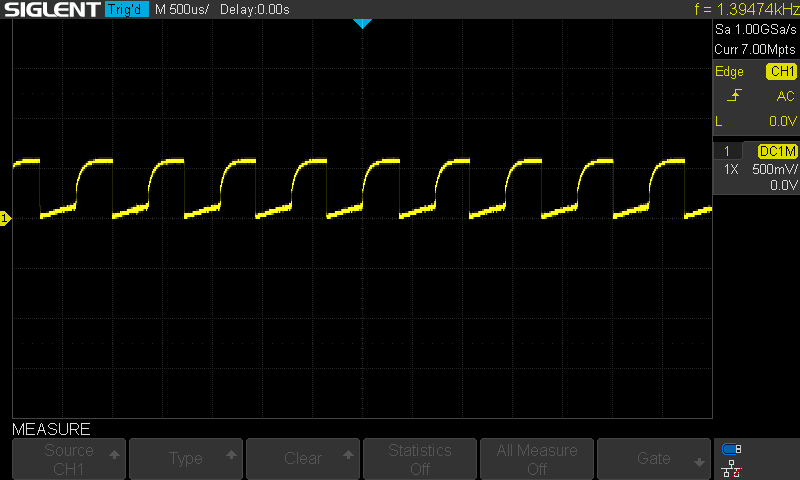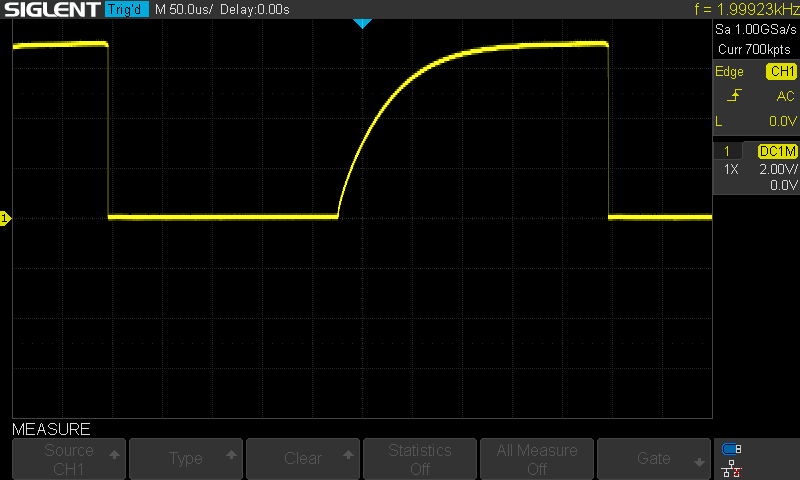Astable Multivibrator 3
I rebuilt my original astable multivibrator with the 2N3904, transistors, better matched capacitors and 10K and 68K Ω resistors from the improved astable multivibrator I wanted to see if that made a difference in the original circuit’s behavior.
I thought perhaps the mis-matched alleged “10 nF” capacitors and 2N2222 transistors might have caused the increase in frequency with increased applied voltage.
The answer is: No. The 2N3904 and better matched capacitors did not make much difference.
This circuit does start oscillating at about 0.5V, which is lower than the original circuit’s 1.3V The waveform at 0.56V is somewhat funky:

| Voltage | Frequency, kHz |
|---|---|
| 0.56 | 1.4 |
| 0.99 | 1.48 |
| 1.5 | 1.64 |
| 2.0 | 1.71 |
| 3.0 | 1.75 |
| 4.0 | 1.79 |
| 5.0 | 1.84 |
| 6.0 | 1.91 |
| 7.0 | 1.98 |
| 8.0 | 2.1 |
The capacitors were 5 and 5.3 nF, the resistor was 68K Ω
I calculate the output frequency should be:
f = 1/(0.69*5e-9*68000 + 0.69*5.3e-9*68000) = 2.1 kHz
That’s a little off from the measured frequency of 1.84 kHz at 5V.
Here’s the waveform at 5.0V. You can clearly see the RC-charging curve:

